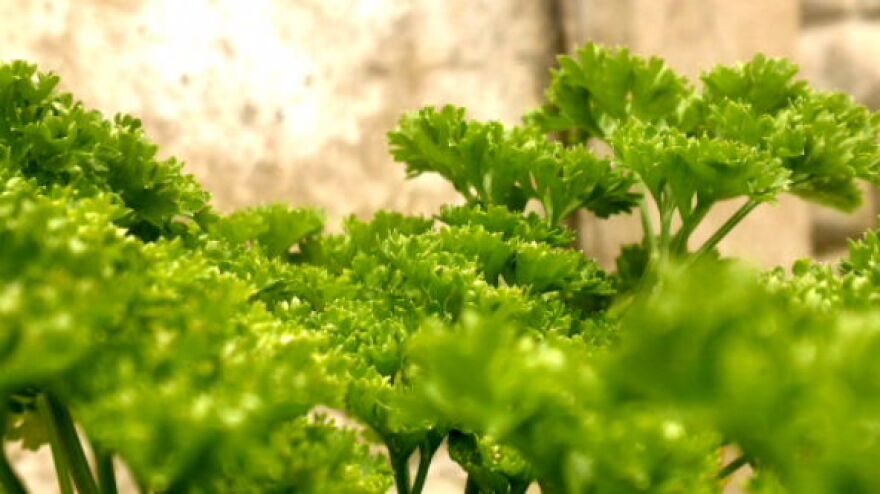I was eating at an Indian restaurant recently, enjoying some naan bread with a dollop of tabbouleh. Since the main ingredient is parsley, it occurred to me that this is one useful herb. And Chef Jerry Pellegrino will tell you, parsley shows up in a lot of things, and we’re lucky that it grows so well in Maryland. You’ll see it in every herb stand at the farmers markets.
Basically, there are two types: flat leaf and curly leaf. I think the classic parsley is the Italian Flat Leaf. These flat leaf varieties have a mild slightly peppery flavor, and they are great for cooking. The curly leaf parsley has less flavor, but better looks, so they are used as garnishes… some might say to an extreme. But their leaves, which tend to be smaller and more dainty are very attractive.
In cooking, parsley shows up in many dishes, often condiments. My most recent encounter was at Peerce’s when tabbouleh arrived with my naan bread.
Tabbouleh is great, and it’s a great use for parsley. It’s common in Indian cuisine and a lot of Mid-Eastern as well. It’s very easy to prepare, it’s essentially a chop and blend recipe. You’ll use flat leaf parsley, mint (which grows like crazy in Maryland), our good old tomatoes, green onions and bulgur wheat. The parsley, mint and onions get chopped as finely as possible, the tomatoes diced into small cubes, and the bulgur is soaked. And one tip would be to make a dressing out of lemon juice and olive oil and soak the bulgur in that until it swells up. Then you just mix it all together. And you’ll see variations with, let’s say, cucumber added in, maybe a touch of salt, and coriander and cumin can be used as well.
Gremolata is an Italian condiment, not very different from the Mexican salsa verde. To make it you chop up Italian parsley and a few garlic cloves. Then you take a lemon, and grate it, accumulating as much as you can. Mix the lemon zest into the parsley and garlic and that’s it. I like to season with a bit of salt and pepper, but it’s not necessary. And you’ll notice that this is a dry recipe. There is no olive oil or other liquid going into the gremolata. You just prepare it like I just described and sprinkle it on anything you want. And by the way, in Italy the classic use is with Milanese braised veal.
In Al’s house, his wife is always mixing up a batch of chimichurri, and she’s gotten pretty good at it.
Chimichurri is great, and it’s used with all kinds of grilled meats. I think the classic cut is grilled flank steak seasoned with lots of pepper. It’s a quick piece of grilling, it only takes a couple minutes. And you serve it with chimichurri, black beans and rice.
Here’s how you make it: Again, you’ll want to use the flat leaf parsley, but unlike gremolata, there will be more ingredients and a vinaigrette to moisten it. In addition to the parsley, you’ll be using minced garlic, dried oregano, some red pepper flakes, smoky paprika, sea salt, red wine vinegar and extra virgin olive oil. Again, this is a chop and blend dish, very easy to make and very appreciated at the dinner table.





